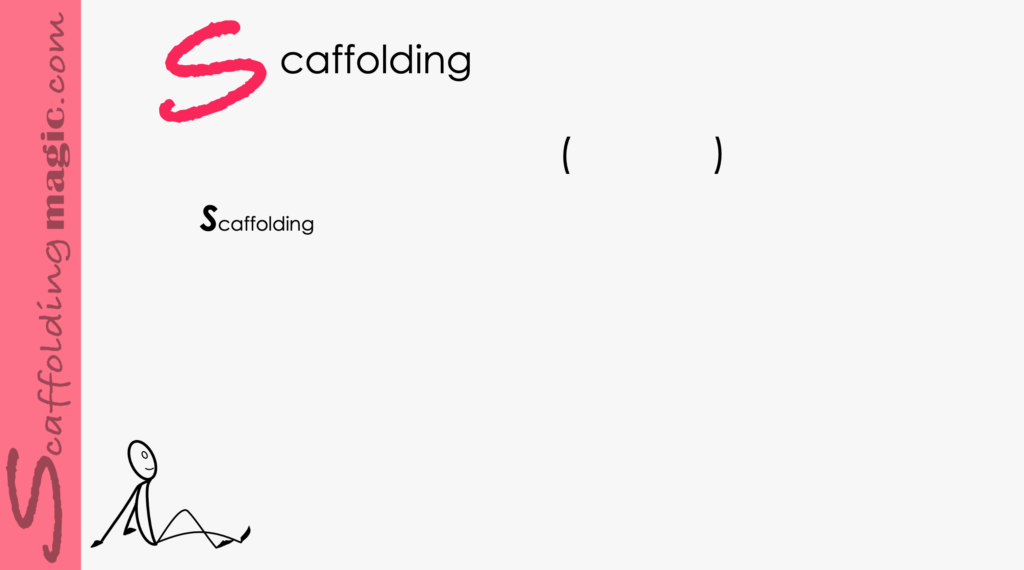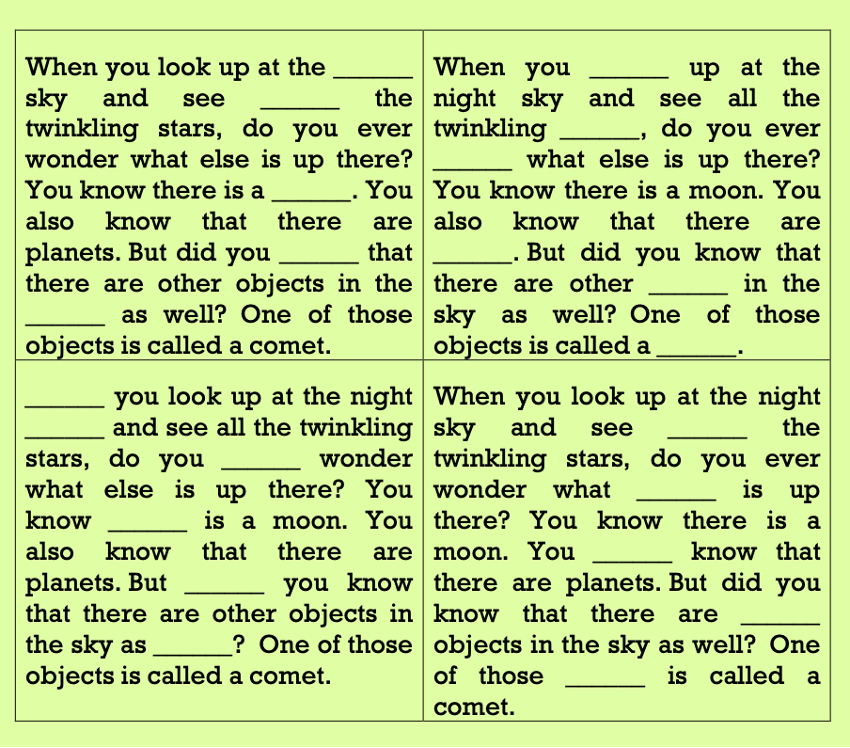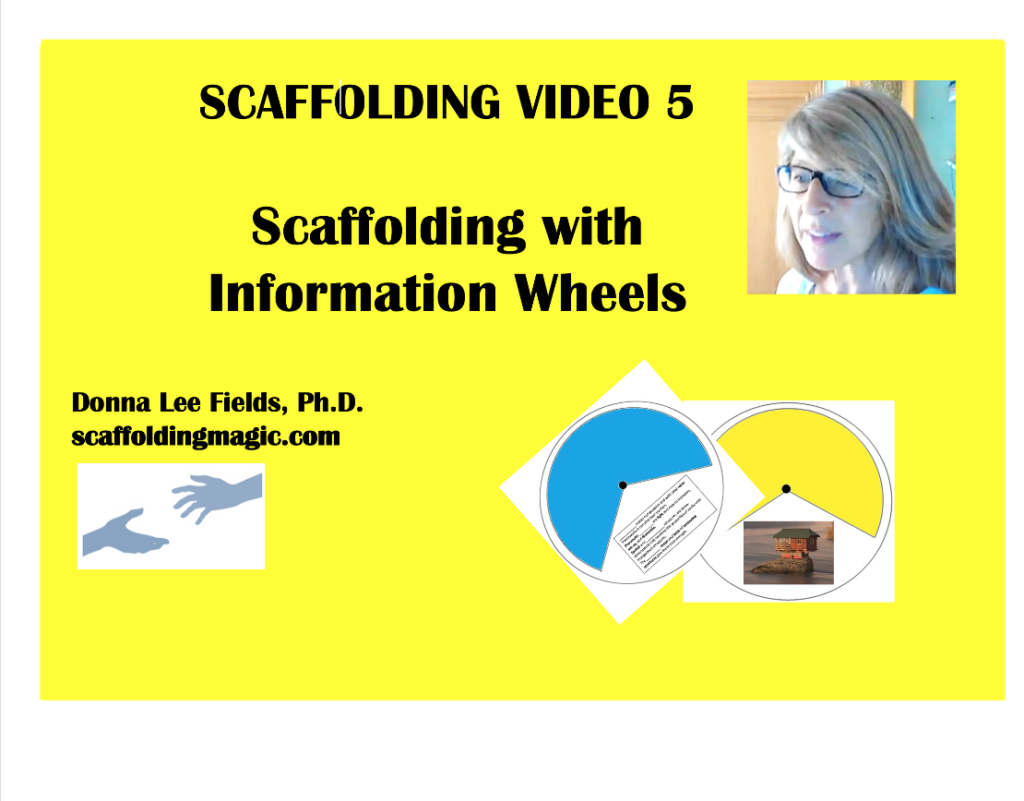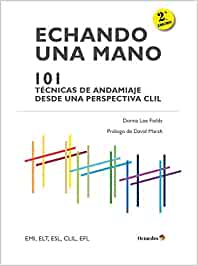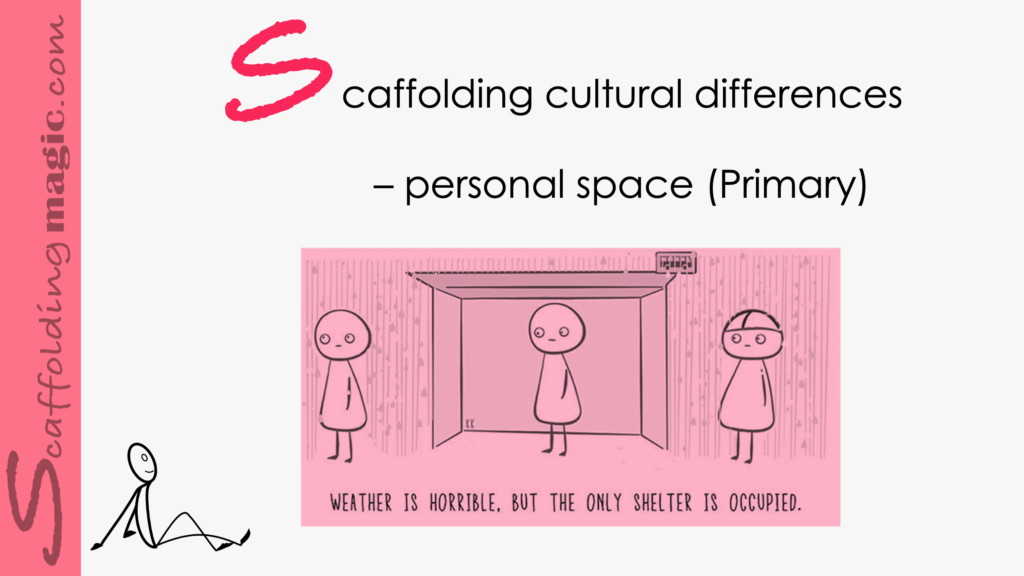You caught a beauty!!!
Download PDF of scaffold here.

Download PDF of scaffold here.
theory behind scaffold…
Using information wheels in lessons is a wonderful way of honouring our students who need to learn through kinesthetic interaction. With information wheels, your students will use deductive reasoning, negotiate meaning, activate long-term memory, and learn new subject matter, all at the same time. Because they will be interacting with information with their hands, they’ll benefit from the essential transition from social-to-exploratory-to dialogic-to presentational-and…finally…to meta learning.*
Working with information wheels is a way of giving students a venue in which they ca take chances by verbalising their suppositions about new information. They’ll discover different perspectives by seeing ideas linguistically, shaped in different ways than their own. Repetition – a strong proponent in the CLIL approach to learning – is embedded in the dynamic and so the information goes deeper, which means our students are more likely to store the knowledge in long-term memory. By interacting with material gradually – in chunks – we compensate for the cognitive load, and so the anxiety level that often arises in the face of new information, is reduced significantly. All of this with the finality of helping our students to build a strong foundation of academic language and so more confidence in verbal communication.
Above all, with this activity, students process information through positive transfer. This happens when the learner uses past experiences to affect learning and performance in a new situation – a person transfers knowledge from one place to another. You’ll see that the dynamic of the Information Wheel is to hide and reveal information at specific points in the activity, with different terms removed each time. This creates the necessity for students to remember, negotiate, infer, and use dialogue, to be able to fill in the missing words that to the best of their ability.
These types of activities give students the opportunity to develop a multitude of skills simultaneously and so augment self-efficacy, which, according to John Hattie’s studies, is one of the highest influences on learning.
We use here an example from a natural science lesson on comets. You’ll see how easily you can adapt the activity to whatever unit you are about to begin.
step by step…
- Choose 5-10 extracts of a text from the lesson you’re about to begin (lab instructions, transcript of a video or podcast, rules of a sport, score from a musical composition, etc.).
- Separate the text into chunks and copy each chunk four times in a text box.
- In each set of four text boxes, eliminate different words and phrases, in other words each extract will have different missing words or phrases. (See example below.)
- Use this template to make Information Wheels – one for each pair of students. Copy and paste one set of chunked text into the apertures of the wheels – one set for each wheel. (See example below.)
- Give one wheel to each pair of students and they work together in the following manner:
- They read the extract in one aperture aloud and guess what the missing words could be.
- They turn the wheel so that the extract in the next aperture is visible.
- They read this extract (now with different words missing) and recall or guess the missing words.
- They continue this dynamic until they can read each of the text blocks with ease.
Note: If they don’t remember the missing words, we want to encourage them to discuss, negotiate, infer, etc., but we want to discourage them from turning the wheel backwards.
- On your signal, students exchange their Information Wheels with another pair and proceed with the same dynamic as before with the new wheel.
- Formative Assessment: Show and image from the Body of the Lesson (in this case the video on comets.) Groups take turns describing the image, using the academic language and information from the wheel activity.
- Reflection: Students write the answers to the following questions from the Question Continuum. (Remember, some questions reflect content and others reflect methodology, thus augmenting even further self-efficacy.)


USING IMAGES:
Information Wheels are ideal to present visual information, for instance – specific pieces of art. Students will be able to focus on the many symbols included in Picasso’s Guernica, for example, by blocking out parts of the masterpiece in each aperture. It would be beneficial to include academic language and/or a list of the images, symbols, objects, etc. that you most want them to notice and discuss.

video explanation of scaffold…
find more scaffolds here…


Scaffoldingmagic.com is your entryway into DYNAMIC bilingual learning methodologies, such as Phenomenon-Based Learning, CLIL, EMI, and ESL. You’ll find ways to implement critical thinking tools (DOK) to promote higher level thinking, the growth mindset, instill an ethic of excellence, deep reflection on learning, and all through multi-cultural, interdisciplinary activities. We have the keys to turning competences into action and to creating collective efficacy in your school so you move ahead as a unified, enthusiastic team.

